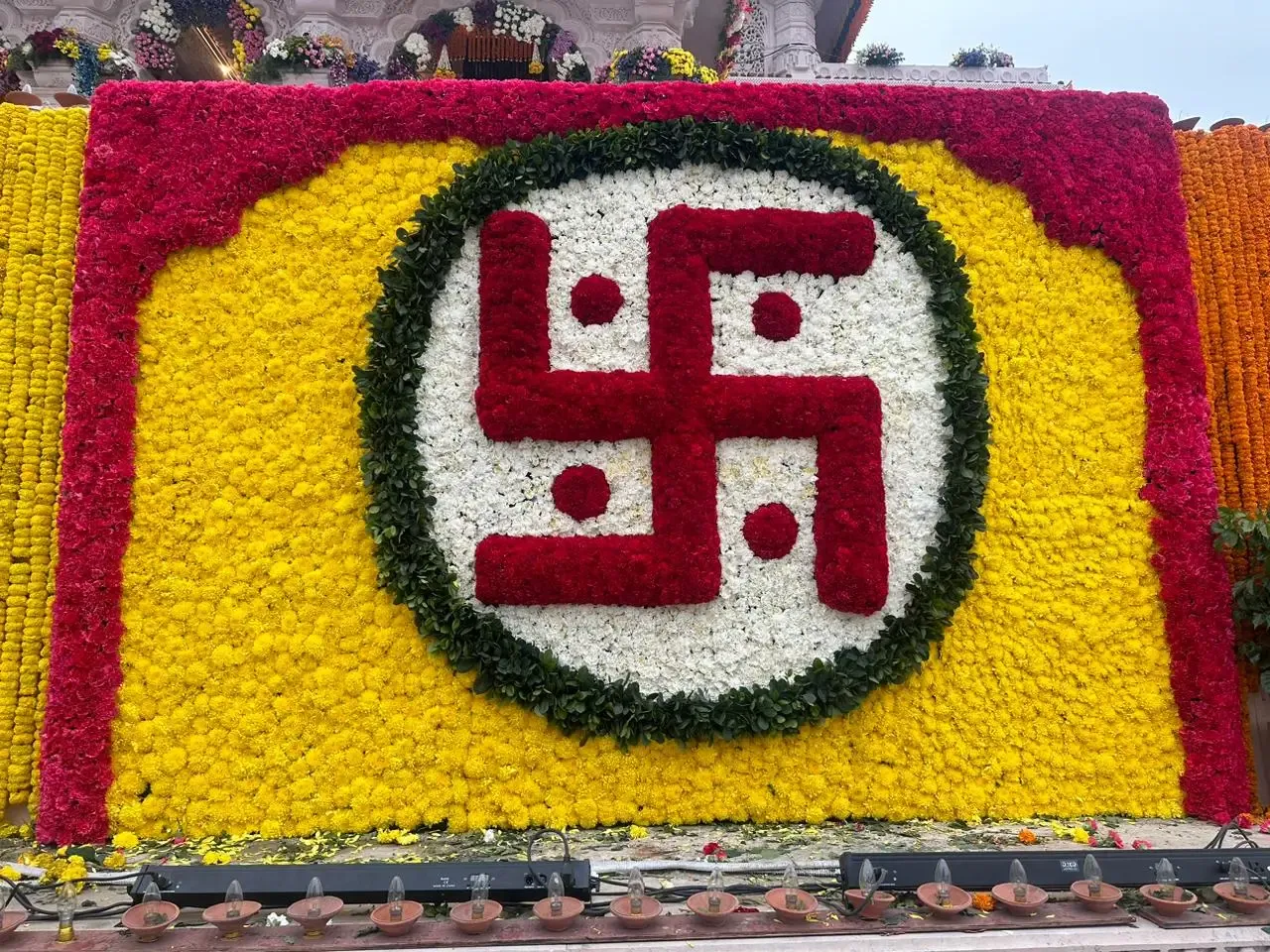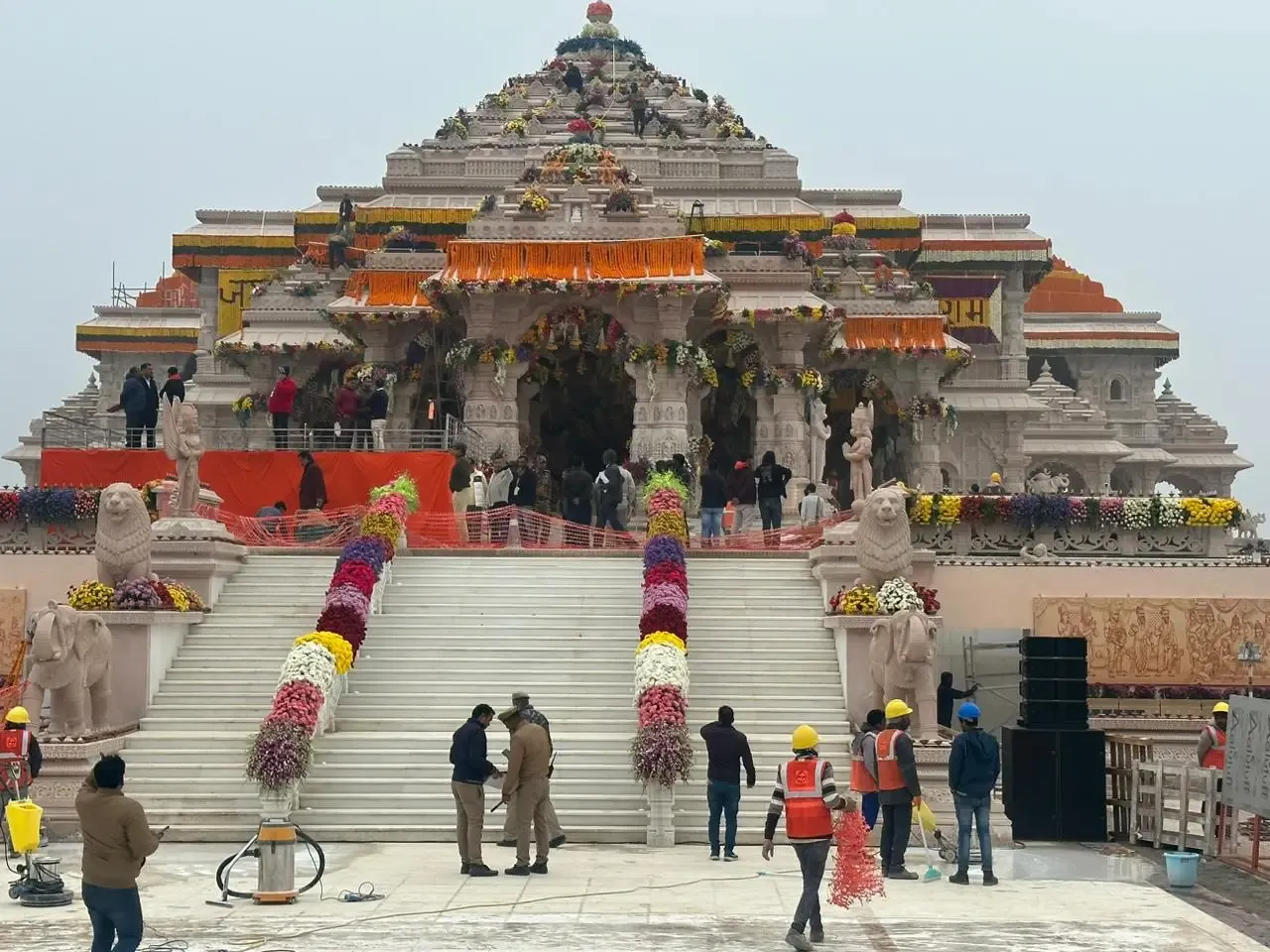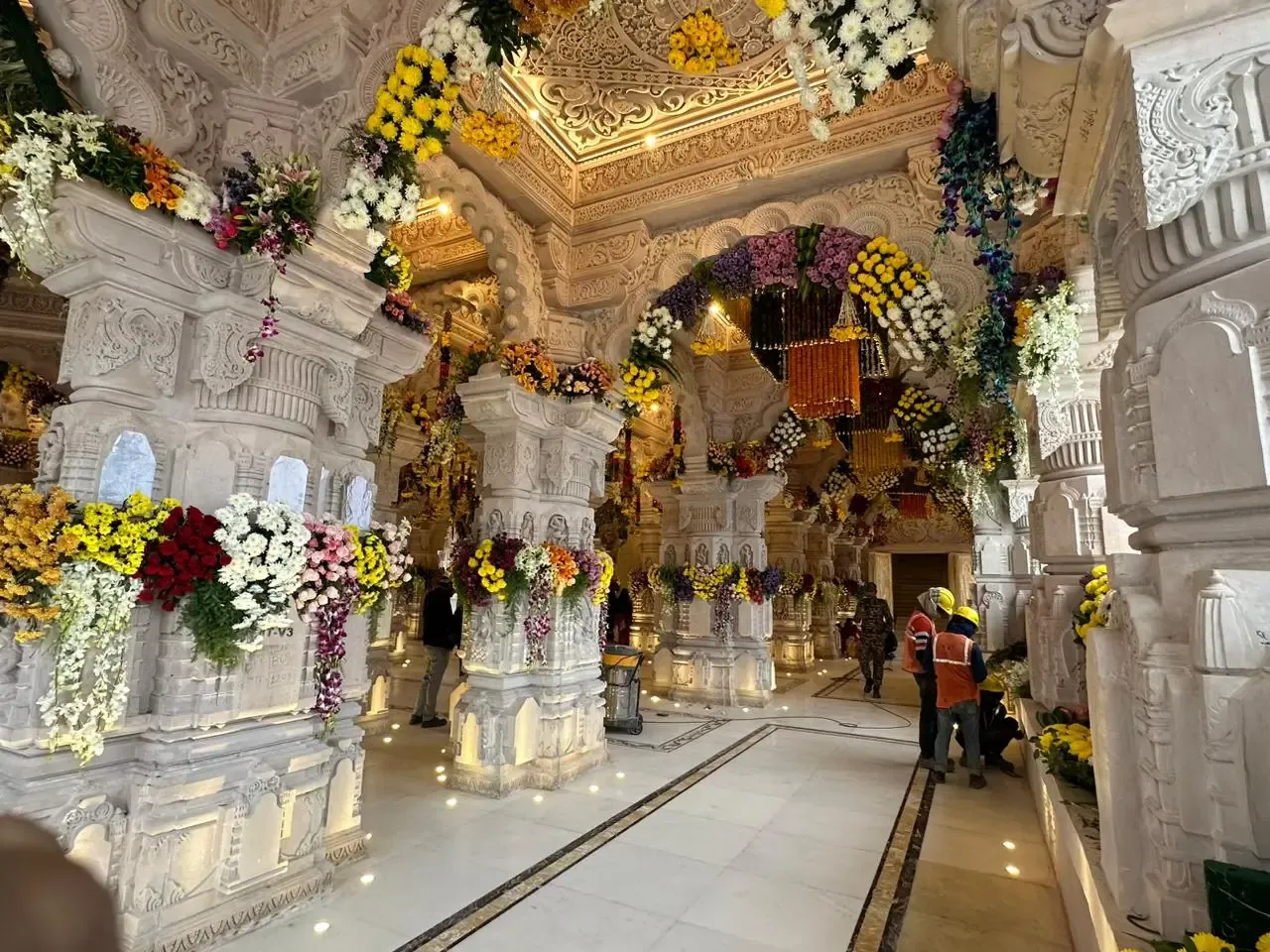Ayodhya Ram Mandir: A Historic Journey
From Mythology to Reality: A Journey Through the Rich History of Ayodhya's Ram Mandir
The sands of time whisper tales of ancient grandeur, of a city blessed by the footsteps of gods and etched in the epics of yore. This is Ayodhya, the spiritual cradle of India, where every grain of soil shimmers with the promise of a momentous saga. And at the heart of this saga lies the Ram Mandir, a testament to faith, resilience, and the unwavering spirit of a nation.
 |
| Swastik in the gate of Ram Mandir |
Our journey begins in the realm of myth, where Ramayana paints a vibrant picture of a golden city ruled by the righteous King Dasharatha. Ayodhya, bathed in the glow of prosperity and piety, echoed with the laughter of Rama, the beloved prince destined to become a celestial hero. Here, on the sacred banks of the Sarayu river, stood the majestic Ram Janmabhoomi, the birthplace of the divine.
Centuries rolled by, empires rose and fell, and Ayodhya, though weathered by time, clung to the memory of its celestial prince. The Ram Janmabhoomi, however, faced the cruel hand of history. In the 16th century, a mosque was built on the disputed site, casting a shadow over the hallowed ground. Yet, the embers of faith continued to flicker, refusing to be extinguished.
Fast forward to the 1980s, and India witnessed a surge of religious fervour. The Ram Janmabhoomi dispute ignited a nationwide movement, echoing with chants of "Ram Lala hum , mandir wahin banayenge" (Lord Rama, we will come and build the temple there). The journey was arduous, paved with legal battles, social unrest, and moments of despair.
 |
| Ayodhya Ram Temple |
But just as a lotus blooms in the murkiest of waters, hope blossomed amidst the chaos. In 2019, the Supreme Court of India delivered a landmark verdict, awarding the disputed land back to the Hindu community. The nation erupted in jubilation, tears of joy mingling with the ecstatic cries of "Jai Shri Ram!"
And so, on a balmy August morning in 2020, Prime Minister Narendra Modi laid the foundation stone for the new Ram Mandir. The earth thrummed with the collective heartbeat of millions, as bricks kissed the sky, each one a silent prayer etched in stone.
Today, the magnificent Ram Mandir stands resplendent, a testament to the unwavering faith of millions. Carved from Makrana marble, its intricate carvings whisper tales of ancient valour and heavenly grace. The five-storied sanctum , adorned with gold and precious stones, awaits the arrival of its divine resident.
 |
| Inside of the Temple |
But the Ram Mandir is more than just a temple; it is a symbol of cultural triumph, a bridge between myth and reality. It stands as a beacon of hope, reminding us that even in the darkest of times, faith can move mountains. As the final touches are added to this architectural marvel, the world watches with bated breath, for it is not just a temple being built, but a legacy being reborn.
The journey of the Ram Mandir is a tapestry woven with threads of time, faith, and unwavering resolve. It is a testament to the enduring power of belief, a promise whispered across centuries, finally finding its voice in the majestic symphony of stone and spirit. Ayodhya, once again, reverberates with the echo of divine footsteps, and the world stands witness to the glorious culmination of a saga etched in eternity.
 |
| Ram Mandir |
In conclusion, the Ram Mandir construction is not just a physical structure, but a spiritual and cultural landmark. It represents the culmination of centuries of faith, hope, and resilience. It is a symbol of unity, a beacon of peace, and a testament to the enduring power of the human spirit.
With the establishment of the Ram Mandir, people may question the practical changes in their lives. Comparatively, it's akin to realising a cherished dream – while external circumstances may not drastically alter, the internal transformation is profound. Attaining this goal brings a sense of satisfaction, peace, and the fulfilment of long-held desires. It emphasises finding contentment in the achievement rather than seeking more. If we were to imagine God asking, "What do you desire?" The response signifies a feeling of completeness and satisfaction, acknowledging that the presence of the divine alone is sufficient.













Post a Comment